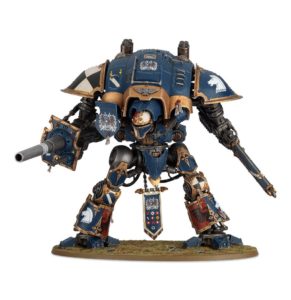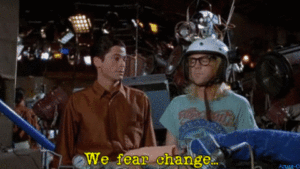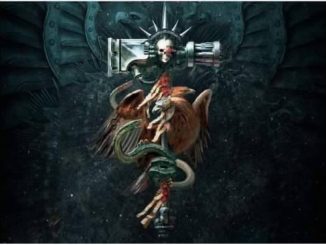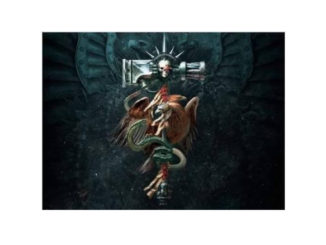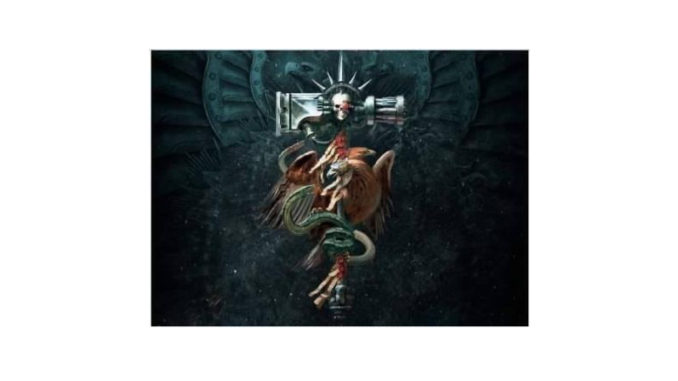
Hey all, Danny here, and today I want to ruminate on one of the bigger brouhahas in the competitive scene: Do Tournament Organizers (TOs) run the game purely as it is, including the mechanic that the first person to finish deploying automatically chooses to go first or second, or do we alter this in some way?
The Mechanic:
So, in case you weren’t entirely sure, there is a new mechanic in 8th edition that took quite a few people by surprise: The player who finishes deploying his/her army first decides who goes first. With the new rule that at least 50% of your army must be deployed on the table, this mechanic ensures that smaller, more elite armies have more control over the initial pace of the game. This seems simple enough, but this is the type of mechanic that has a tremendous impact on the game itself.
What does it do?
This mechanic introduces a whole new dimension to list building: Drops. We’ve talked about this before, but it bears repeating. When you are building a list, you now need to consider how many units you need to deploy at the start of the game (Drops). A low-drop army will consist of either a few powerful, points intensive units or utilize transports to essentially get 2 for 1 in terms of deployment (or more if you have a lot of characters).
How this affects the meta is not subtle: armies that rely on alpha-strike (hitting first) to mitigate their weaker durability have to build lists with low drops to ensure that they do get to go first. Armies that rely on hordes or MSU (multiple small units) will now have to build with idea that they were likely not go first, so they must build with a certain level of redundancy. Case in point: The Tervigon is a pretty awesome model, and its ability to “heal” Termagant units is one of the few ways to get free points in Matched Play, but it lacks an invulnerable save and is easy to target. If you take a single Tervigon (at 250 points) but you have so many drops that you are likely to go second, you have to then assume that the Tervigon is not going to live past Turn 1. This makes the Tervigon less effective unless you use a Tyrannocyte to drop it down Turn 1 or heavily invest in defense mechanics like Malathropes and a Void Shield Generator. In short, the Tervigon as a model is heavily restricted in competitive play due to this mechanic and how it interacts with list buildings.
Now, is this a good or bad thing?
Why most major tournament formats have changed the mechanic:
ITC, NOVA, and most other major tournament formats have made an alteration to this mechanic, changing the “automatic first turn” to “+1 to the roll to determine the first turn”. This gives the player with the lower drops a significantly higher chance of going first, roughly a 66% chance of going first, but then there is still a chance for a player with a high number of drops to go first in this format.
So, let’s underline the logic of this. First, it still maintains what appears to be the mechanic’s intent: smaller, elite armies should have an advantage against horde armies, particularly to balance out that horde armies have a strong advantage in the mission design of 8th edition. Now that objectives are controlled by the number of models, not by units or specific units (outside of a few missions), armies with large numbers of models can bubble wrap and own objectives, especially if they have morale control like Synapse or Commisars. Giving smaller armies the ability to hit first and dictate the flow of battle from the start helps balance out that they are inherently weaker in a major faucet of the game. The overall intent of the mechanic is intact, but it does provide a bit of a pressure-release from more exploitative builds.
It also does remove the amount of control that a single player has over the flow of the game. As per the new rules, the player that goes first gets to roll the dice to determine if the game ends on Turn 5. RAW, command points can be used to reroll this, and so a single player gets to determine with great effect how the game begins and ends. This is something that the American playtesters like the teams behind NOVA and ITC have said is the biggest issue with the mechanic. It is absolutely amazing that a single player can not only determine who goes first but also when the game ends. Being able to reroll the dice to see if the game ends gives one player a dramatic advantage, and high level tournament players can use this advantage to great effect. Really, it gives far more power to the person who goes first, and that is something that needs to be mitigated as going first should not mean that you have a large statistical likelihood of winning. That’s bad game design.
It also does prevent some armies from simply shooting armies off the board, namely a few power builds like 4 Imperial Knights or several Baneblades and 100+ conscripts. There has been a lot of chatter on the internet about these possible builds and how powerful they become when they can guarantee a first turn of shooting (outside of the 16% chance they get seized on). Let’s also be real: the majority of 40k players are not competitive, even if they play in tournaments. If you have a mechanic where one player has a distinct advantage to just pour overwhelming firepower 5 out of 6 games before any interaction on the opponent’s part, you are setting yourself up for negative play experiences. There will be a lot of players who just want to roll dice and have fun feel like they just got cheesed out, and well, from a TO perspective, that’s bad for the health of events.
It is worth noting that the groups really advocating for this change were play testers and saw these rules in full effect well before anyone else. It also worth noting that they were typically all either major TOs or high placing competitive players.
So why shouldn’t we change this?
Well, there is certainly a group of folk who do not want to change any of the rules, at least for a few months. There is of course a good argument behind this.
First, rule sets are ecosystems, and changing one rule changes the rest of the rule set in some way, and so before we as players start changing rules, we should see what the ecosystem looks like on its own. Quite simply, this is about letting GW have the game that they made and for us to really test what it looks like outside of a small group of play testers. In a generous estimation, there were maybe 50 outside play testers? That is not even a big GT anymore, let alone the thousands of people who play this game competitively. Within the first three months of 40K in the wild, exponentially more games will be played than what was done in play testing. This will give us a more accurate understanding of the mechanic’s impact.
Will the Meta be impacted by this mechanic? Of course, but perhaps that was as designed. Perhaps GW really did want elite armies to go first (or 4 Knights) because in the mission design, bodies matter so much more. Perhaps this is the meta that they wanted to push where horde armies go second and get shot first because they are more likely to win the scenario. We’ve already seen some rumblings of the 150+ conscript list that drowns the table in cheap bodies with awesome morale control. Orks and Tyranids can do something similar, and even Necrons with their incredible resilience can prove frustrating. This might be the balance that GW wanted where super elite armies struggle against hordes, and this forces the meta to adapt to where either Elite armies fade away or more balanced armies capable of managing both are the most successful. Take-All-Comers lists (TAC) have a benefit and niche in a system where going first is far more fixed because they can be built to survive the first turn hit of an elite army but also have the firepower necessary to thin hordes when they get to first.
Second, this mechanic actually benefits hordes and MSU more than they already are by the rules. By giving hordes the chance to go first, even if only 1 in 3 or 4 games (really, by the math, closer to 1 in 3 games when including Seize the Initiative) , it makes them more dominant in the mission as before suffering any hits, they can move and start to control the board, besides hitting the elite armies and doing damage that is far more valuable. In terms of shaping a nascent meta, this format allows for hordes to gain a larger advantage than before.
Third, it adds more randomness to the game, which lessens the overall strategy. It is part of the game of how you build your list, and with an auto-mechanic with very little chance associated, you can build a list more confidently. If you are taking a lot of super heavies, you can build with a certain level of safety in mind and even what weapons you use knowing that you are 84% likely to go first. On the flip side, if you are playing horde, you have to build your lists assuming that you are going to get hit first. This means you either need to invest in methods to protect critical pieces or simply have enough redundancy where you don’t care. That is part of smart list building. Again, to use Tyranids as an example, if I build a swarm list that includes a Tervigon and Swarmlord but with no way to protect them, I have made a bad list because two linchpin pieces are vulnerable to alpha-strike, so if I really want to run a swarm, I need to factor in that I won’t go first most games, and that means if I really want Tervigon, I need to invest in protecting it.
Lastly, this change could encourage more skew and lessen Take All Comer builds. My logic behind this is that having a wide variability of who goes first gives advantages to armies on the far ends of the spectrum. As discussed above, going full horde has an advantage in that sometimes you get to go first, but spam lists are also stronger. Super elite armies like 4 Knights may be a bit weaker, but 7 Storm Ravens? Now that it can go first against an even more elite army means that it is stronger since that is a lot of firepower that they get to dish out, and they are still more likely to go first against a horde or MSU. Armies that have 10-12 drops that are designed to have elements capable of handling heavy armor as well as horde are weaker since they are likely not going first against many builds but now against hordes, they are less likely to go first, which they need to. The overall goal of 8th edition was to create a balanced ruleset where TAC lists are legitimately competitive, but perhaps this is limited by changing the Go-First mechanic. TAC are just weaker against horde because they can no longer be more or less confident in going first against them.
So, in the end…
What do you think? Should we follow the lead of some community leaders go with the changed mechanic, or do we let it ride and see how the game actually shapes up after a few months?
From my own side (purely my own), I tend to favor letting things ride, simply because I want to see the game that GW created, and I think we need far more data on how the meta shapes up before we start changing fundamental mechanics. Of course, I also see the logic and argument behind changing it, and overall, I am more interested in hearing what others think. Thanks as always for reading, please check out our Patreon so we can give you guys more free shit, and if you have anything you want me to ramble about, you can comment here or hit us up on our Facebook page.



